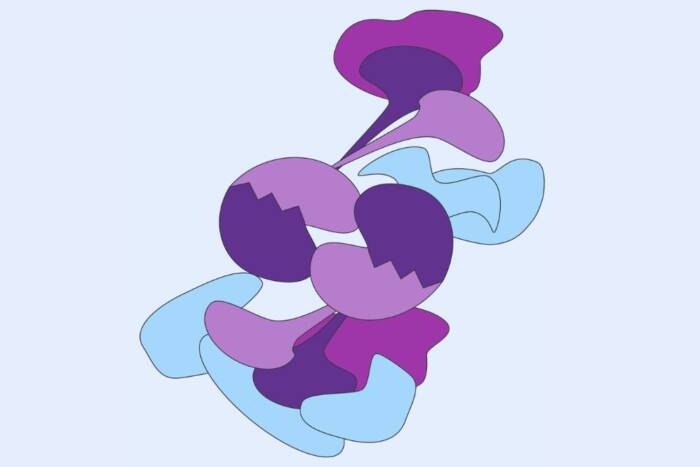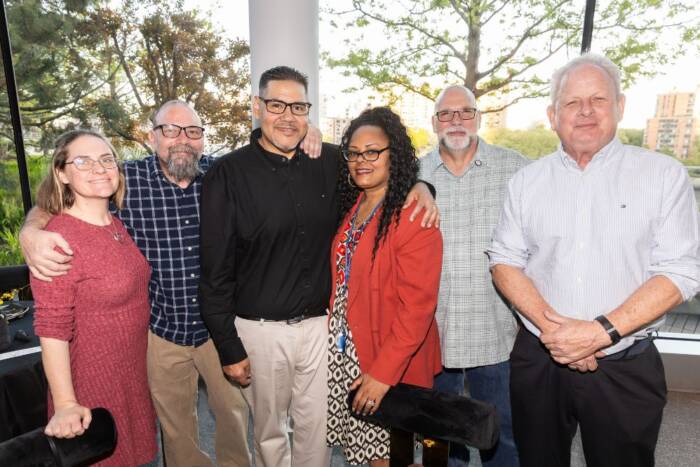New gene for hair loss identified
A newly identified gene connected to hair growth may inform future treatments for male pattern baldness, says a team of researchers from Rockefeller, Columbia and Stanford Universities. The scientists found that the gene, called APCDD1, causes a type of progressive hair loss known as hereditary hypotrichosis simplex, which miniaturizes hair follicles, replacing thick hair with thinner, finer strands akin to peach fuzz. The findings were published this week in Nature.
The team made their discovery by analyzing genetic data from Pakistani and Italian families with hereditary hypotrichosis simplex. They found a common mutation in the APCDD1 gene, which is located in a specific region on chromosome 18 that has been implicated in previous studies in other forms of hair loss, including androgenetic alopecia and alopecia areata, hinting the researchers, including Ali H. Brivanlou, Robert and Harriet Heilbrunn Professor and head of Rockefeller’s Laboratory of Molecular Vertebrate Embryology(opens in new window), and postdoc Alin Vonica, found that APCDD1 inhibits a signaling pathway that has been shown to control hair growth in mice. But, until now, the pathway, known as the Wnt signaling pathway, did not appear to be involved in human hair loss. The discovery that manipulating the Wnt pathway may have an effect on human hair follicle growth provides evidence that hair growth patterns in humans and in mice are more similar than previously believed.
 (opens in new window)
(opens in new window)
Developing baldness. Researchers have shown that a mutation known to control hair growth in mice may affect human hair loss as well. Scientists showed the mutation affected the Wnt signaling pathway in the embryos of the African clawed frog, pictured without the mutation (top) and with it (bottom). at a broader role in hair follicle biology.
“The identification of this gene underlying hereditary hypotrichosis simplex has afforded us an opportunity to gain insight into the process of hair follicle miniaturization, which is most commonly observed in male pattern hair loss or androgenetic alopecia,” says Angela M. Christiano, professor of dermatology and genetics and development at Columbia University Medical Center, and lead author of the study. “It is important to note that while these two conditions share the same physiologic process, the gene we discovered for hereditary hypotrichosis does not explain the complex process of male pattern baldness.”
“After Angela landed on a molecular component that they identified as causal to a state of disease, Alin and I determined that the appropriate biochemical test could be easily accomplished in as simple a biological system as the frog,” says Brivanlou. “It was the molecular dissection of APCDDI function in early Xenopus embryogenesis that hinted the first molecular function within the context of the Wnt pathway. The collaborative team then confirmed it.”
The discovery that manipulating the Wnt pathway may have an effect on human hair follicle growth suggests a new approach that could be more broadly applicable than therapies on the market today. “Unlike commonly available treatments for hair loss that involve blocking hormonal pathways, treatments involving the Wnt pathway would be non-hormonal, which may enable many more people suffering from hair loss to receive such therapies,” Christiano says.
The researchers are now working to understand the complex genetic causes of other forms of hair loss including alopecia areata, with the hope of eventually developing new, effective treatments for these conditions. “This work represents what molecular genetics and developmental biology in combination can contribute to the resolution of a molecular mechanism of this dramatic developmental disease,” Brivanlou says.
 (opens in new window) (opens in new window) |
Nature 464: 1043–1047 (April 15, 2010) APCDD1 is a novel Wnt inhibitor mutated in hereditary hypotrichosis simplex(opens in new window) Yutaka Shimomura, Dritan Agalliu, Alin Vonica, Victor Luria, Muhammad Wajid, Alessandra Baumer, Serena Belli, Lynn Petukhova, Albert Schinzel, Ali H. Brivanlou, Ben A. Barres and Angela M. Christiano |


